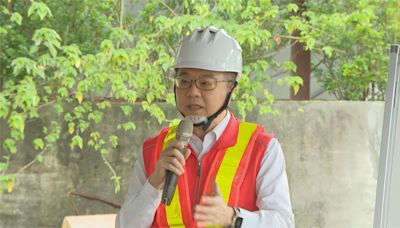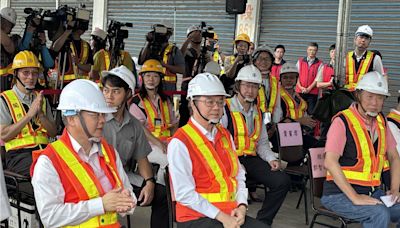搜尋結果
Political career. Premiership (2024–) Notes. References. Cho Jung-tai ( Chinese: 卓榮泰; pinyin: Zhuó Róngtài; Wade–Giles: Cho2 Jung2-tʻai4; born 22 January 1959) is a Taiwanese politician who is the premier of the Republic of China. He served on the Taipei City Council from 1990 to 1998, when he was first elected to the Legislative Yuan.
Taylor Alison Swift (born December 13, 1989) is an American singer-songwriter. A subject of widespread public interest with a vast fanbase, she has influenced the music industry, popular culture, and politics through her songwriting, artistry, entrepreneurship, and advocacy. Swift began professional songwriting at age 14. She signed with Big ...
Titanic is a 1997 American epic romantic disaster film directed, written, produced, and co-edited by James Cameron. Incorporating both historical and fictionalized aspects, it is based on accounts of the sinking of RMS Titanic in 1912.
The Matrix is a 1999 science fiction action film written and directed by the Wachowskis. It is the first installment in the Matrix film series, starring Keanu Reeves, Laurence Fishburne, Carrie-Anne Moss, Hugo Weaving and Joe Pantoliano, and depicts a dystopian future in which humanity is unknowingly trapped inside the Matrix, a simulated reality that intelligent machines have created to ...
- Names
- Birth and Parentage
- Reign as King of Qin
- Reign as Emperor of Qin
- Final Years
- Family
- Legacy
- Bibliography
- Further Reading
- External Links
Modern Chinese sources often give the personal name of Qin Shi Huang as Ying Zheng, with Ying (嬴) taken as the surname and Zheng (政) the given name. However, in ancient China, the naming convention differed, and the clan name Zhao (趙), the place where he was born and raised, may be used as the surname. Unlike modern Chinese names, the nobles of anc...
According to the Records of the Grand Historian, written by Sima Qian during the Han dynasty, the first emperor was the eldest son of the Qin prince Yiren, who later became King Zhuangxiang of Qin. Prince Yiren at that time was residing at the court of Zhao, serving as a hostage to guarantee the armistice between the Qin and Zhao states. Prince Yir...
Regency
In 246 BC, when King Zhuangxiang died after a short reign of just three years, he was succeeded on the throne by his 13-year-old son. At the time, Zhao Zheng was still young, so Lü Buwei acted as the regent prime minister of the State of Qin, which was still waging war against the other six states. Nine years later, in 235 BC, Zhao Zheng assumed full power after Lü Buwei was banished for his involvement in a scandal with Queen Dowager Zhao. Zhao Chengjiao, the Lord Chang'an (长安君), was Zhao Zh...
Lao Ai's attempted coup
As King Zheng grew older, Lü Buwei became fearful that the boy king would discover his liaison with his mother, Lady Zhao. He decided to distance himself and look for a replacement for the queen dowager. He found a man named Lao Ai. According to The Record of Grand Historian, Lao Ai was disguised as a eunuch by plucking his beard. Later Lao Ai and queen Zhao Ji got along so well that they secretly had two sons together. Lao Ai was ennobled as Marquis Lào Ǎi, and was showered with riches. Lao...
First assassination attempt
King Zheng and his troops continued their conquest of the neighbouring states. The state of Yan was no match for the Qin states: small and weak, it had already been harassed frequently by Qin soldiers. Crown Prince Dan of Yan plotted an assassination attempt against King Zheng, recruiting Jing Ke and Qin Wuyangfor the mission in 227 BC. The assassins gained access to King Zheng by pretending a diplomatic gifting of goodwill: a map of Dukang and the severed head of Fan Wuji. Qin Wuyang stepped...
Administrative reforms
In an attempt to avoid a recurrence of the political chaos of the Warring States period, Qin Shi Huang and his prime minister Li Si worked to completely abolish the feudal system of loose alliances and federations. They organized the empire into administrative units and subunits: first 36 (later 40) commanderies (郡, Jùn), then counties (縣, Xiàn), townships (鄉, Xiāng) and hundred-family units (里, Li, roughly corresponding to modern-day subdistricts and communities). People assigned to these un...
Economic reforms
Qin Shi Huang and Li Si unified China economically by standardizing the Chinese weights and measures. Wagon axles were prescribed a standard length to facilitate road transport. The emperor also developed an extensive network of roads and canals for trade and communication. The currencies of the different states were standardized to the Ban liang coin (半兩, Bàn Liǎng). Perhaps most importantly, the Chinese script was unified. Under Li Si, the seal scriptof the state of Qin became the official...
Monumental statuary
According to Chinese records, after unifying the country in 221 BCE, Qin Shuhuang confiscated all the bronze weapons of the conquered countries, and cast them into twelve monumental statues, the Twelve Metal Colossi, which he used to adorn his Palace. Each statue was said to be 5 zhang [11.5 meters] in height, and weighing about 1000 dan [about 70 tons]. Sima Qian considered this as one of the great achievements of the Emperor, on a par with the "unification of the law, weights and measuremen...
Death
In 211 BC a large meteor is said to have fallen in Dongjun in the lower reaches of the Yellow River, and someone inscribed the seditious words "The First Emperor will die and his land will be divided" (始皇死而地分). The Emperor sent an imperial secretary to investigate this prophecy. No one would confess to the deed, so all living nearby were put to death, and the stone was pulverized. During his fifth tour of Eastern China, the Emperor became seriously ill in Pingyuanjin (Pingyuan County, Shandon...
Succession
Upon witnessing the Emperor's death, Imperial Chancellor Li Si feared the news could trigger a general uprising during the two months' travel for the imperial entourage to return to the capital Xianyang. Li Si decided to hide the emperor's death: the only members of the entourage to be informed were a younger son, Ying Huhai, the eunuch Zhao Gao, and five or six favourite eunuchs. Li Si ordered carts of rotten fish to be carried before and behind the wagon of the Emperor, to cover the foul sm...
The following are some family members of Qin Shi Huang: 1. Parents 1.1. King Zhuangxiang of Qin 1.2. Queen Dowager Zhao 2. Half-siblings: 2.1. Chengjiao, legitimate paternal half brother from a different motherLord of Chang'an 2.2. Two illegitimate maternal half-brothers born to Queen Dowager Zhao and Lao Ai. 3. Children: 3.1. Fusu, Crown Prince (1...
Mausoleum and Terracotta Army
The Chinese historian Sima Qian, writing a century after the First Emperor's death, wrote that it took 700,000 men to construct the emperor's mausoleum. British historian John Man points out that this figure is larger than the population of any city in the world at that time and he calculates that the foundations could have been built by 16,000 men in two years. Sima Qian never mentioned the terracotta army, but he did mention that the Qin Emperor built monumental bronze statues for his palac...
Reputation and assessment
Traditional Chinese historiography almost always portrayed the Emperor as a brutal tyrant who had an obsessive fear of assassination. Ideological antipathy towards the Legalist State of Qin was established as early as 266 BC, when Confucian philosopher Xunzi disparaged it.[citation needed] Later Confucian historians condemned the emperor, alleging that he burned the classics and buried Confucian scholars alive. They eventually compiled a list of the Ten Crimes of Qinto highlight his tyrannica...
Early
1. Sima Qian (c. 91 BC). Records of the Grand Historian 1.1. Sima Qian (2007). Records of the Grand Historian: Qin dynasty. Translated by Raymond Dawson. Columbia University Press. ISBN 978-0-19-922634-4. 1.2. Sima Qian (2006). William, Nienhauser (ed.). The Grand Scribe's Records V.1: The Hereditary Houses of Pre-Han China. Indiana University Press. ISBN 9780253340252. 1.3. Sima Qian (1994). William, Nienhauser (ed.). The Grand Scribe's Records I: The Basic Annals of Pre-Han China. Indiana U...
Modern
Books 1. Barbieri-Low, Anthony J.; Yates, Robin D.S. (2015). Law, State, and Society in Early Imperial China. Sinica Leidensia. Vol. 1. Leiden: Brill Publishers. ISBN 978-90-04-30053-8. 2. Bodde, Derk (1986). "The State and Empire of Ch'in". In Twitchett, Dennis; Loewe, Michael (eds.). The Cambridge History of China, Volume 1: The Ch'in and Han Empires, 221 BC–AD 220. Cambridge: Cambridge University Press. ISBN 978-0-521-24327-8. 3. Clements, Jonathan (2006). The First Emperor of China. Chelt...
Bodde, Derk (1967) [1938]. China's First Unifier: a Study of the Ch'In Dynasty as Seen in the Life of Li Ssu (280?–208 B.C.). Hong Kong: Hong Kong University Press. OCLC 605941031.Levi, Jean (1987). The Chinese Emperor. Translated by Bray, Barbara. Boston: Houghton Mifflin Harcourt.Yu-ning, Li, ed. (1975). The First Emperor of China. White Plains: International Arts and Sciences Press. ISBN 978-0-87332-067-2.Qin Shi Huang at ChinaknowledgeMedia related to Qin Shi Huangat Wikimedia CommonsQuotations related to Qin Shi Huangat WikiquoteYES stroke alphabetical order. The YES stroke alphabetical order, also called YES stroke-order sorting, briefly YES order or YES sorting, is a Chinese character sorting method based on a stroke alphabet and stroke orders. [1] [2] It is a simplified stroke-based sorting method free of stroke counting and grouping. [3]
Taekwondo (/ ˌ t aɪ k w ɒ n ˈ d oʊ, ˌ t aɪ ˈ k w ɒ n d oʊ, ˌ t ɛ k w ə n ˈ d oʊ /; Korean: 태권도; [t ʰɛ.k wʌ n.d o] ), also spelled tae kwon do or taekwon-do, is a Korean martial art and combat sport involving punching and kicking techniques. The literal translation for taekwondo is "kicking", "punching", and "the art or way of". ...






